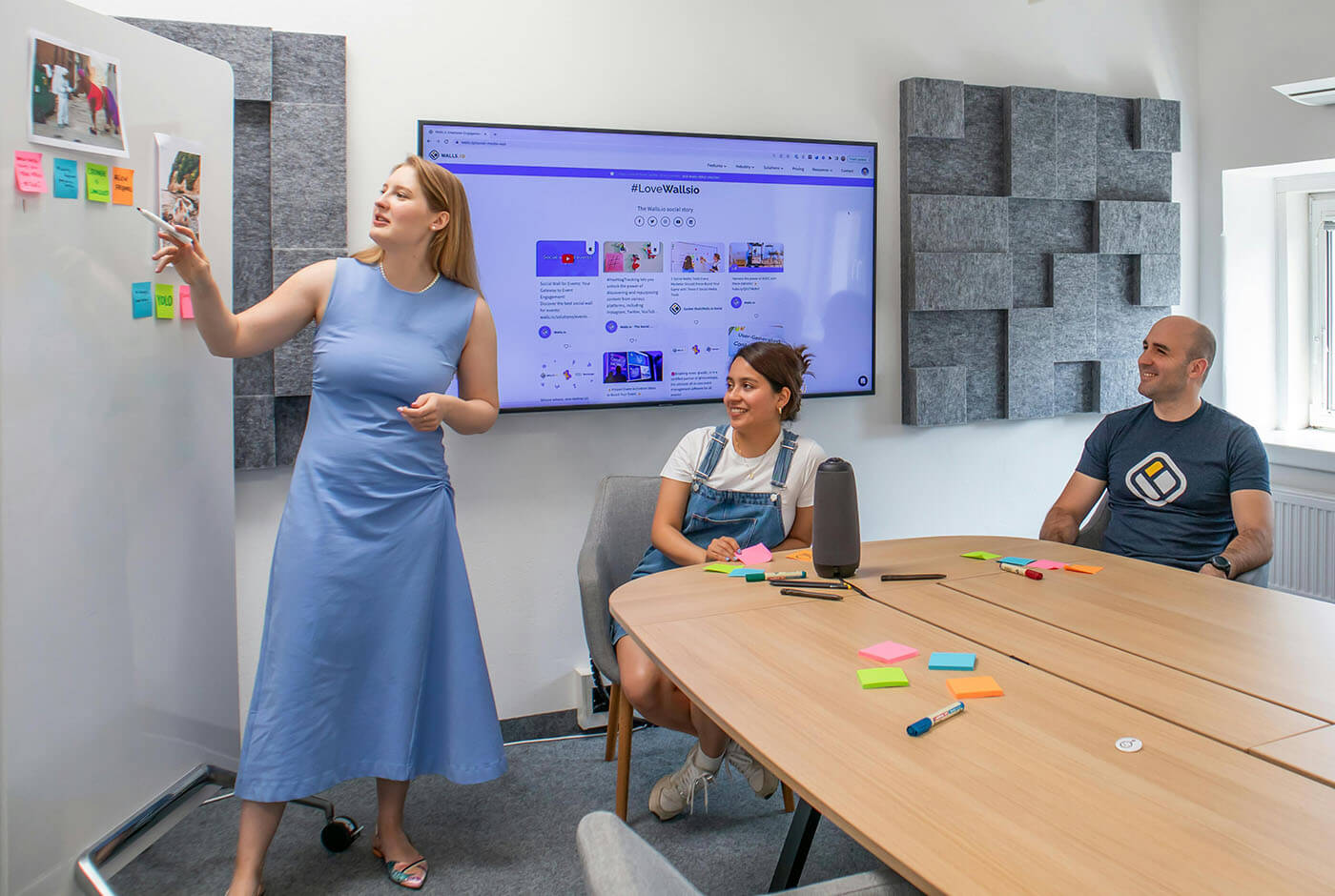Mentoring has numerous benefits, and companies that have chosen to invest in it are reaping the rewards. Whether they’re Fortune 500 companies with employees who report high levels of job satisfaction or small business owners who are constantly innovating in their industries, the right initiatives can help mentored businesses soar to new heights.
Mentoring in 2025 and Beyond
PWC surveyed 4,702 CEOs about their outlook on business success. 45% reported that they don’t believe their organizations will be viable in ten years’ time if they continue in their current trajectory.
The same study identified several common trends that may explain this perspective. Rapid changes in technology, customer preferences and government regulations are some of the biggest factors creating pressures for companies to reinvent consistently.
Whatever direction the company chooses to take, a successful pivot or reinvention requires an agile and resilient workforce. As we’ll see in the mentoring statistics below, mentoring can be an effective way to build a culture of organizational excellence and develop employees who are nimble to market and organizational needs.
Employee Engagement and Productivity
Implementing mentoring initiatives can have a huge impact on a company’s productivity and growth.
A Gallup survey looked at the impact of mentoring on engagement levels among employees. Employees with mentor relationships tend to be more engaged than those without. This means that employees who have a workplace mentor produce better business outcomes. Disengaged employees, on the other hand, can lead to organizations losing money, according to research from McKinsey & Company.
Below are some general mentoring statistics that show the impact of mentoring on a company’s productivity and growth:
- Employees with mentors are twice as likely to be engaged than those who are not (Gallup).
- Businesses with highly engaged employees achieve 18% more productivity (sales), than businesses with disengaged employees (Gallup).
- Organizations with high levels of employee engagement are 23% more profitable than organizations with lesser-engaged employees (Gallup).
- Customer engagement and loyalty are 10% higher for businesses in the top quartile for employee engagement compared to businesses in the bottom quartile (Gallup).
- Employee disengagement costs a median-size S&P company between $228 and $355 million a year in lost productivity (McKinsey).
- Employees who are happy at work are 12% more productive than their less-happier counterparts (University of Warwick).
How Mentoring Improves Retention Rates
Implementing mentoring programs can go a long way in improving employee retention. When mentees feel empowered to build meaningful relationships in the workplace—whether that’s with a formal mentor or with their peers in a mentoring circle or group mentoring situation—they’re less likely to leave. Employees with strong relationships at work are more likely to stay with a company and experience higher job satisfaction compared to employees who do not.
The following mentoring statistics demonstrate the positive impact mentoring programs and the camaraderie they cultivate have on employee retention:
- Businesses with high employee engagement see lower turnover rates compared to those with lower engagement. In high-turnover organizations, those with high employee engagement have 21% less turnover than those with low engagement. In low-turnover organizations, companies with a highly engaged workforce experience 51% less turnover compared to similar organizations with lower employee engagement levels (Gallup).
- When Cox Automotive, a global automotive services company, launched a mentoring program in collaboration with Chronus, they achieved a 79% retention rate among program participants over two years—significantly higher than the company’s average retention rate of 67% (Chronus).
- A major U.S. academic hospital implemented an employee mentoring program with Chronus and reported an 89% retention rate for participants, compared to a 74% retention rate for employees not involved in the program (Chronus).
How Mentoring Creates a Strong Company Culture
Mentoring can also have a direct impact on a company’s culture. Carmine Di Sibio, the former Global Chairman and CEO of Ernst and Young until July 2024, discussed the importance of integrating mentoring into company culture on a podcast. Drawing on his experience from being part of a sports team, Di Sibio believes that people work best in small teams. And having mentoring as an organizational norm is what allows each of those teams to succeed. (For context, EY’s global workforce totals up to nearly 400,000 employees.)
Here are some mentoring statistics that illustrate the positive impact of mentoring programs on company culture:
- When a global, multi-brand, technology company partnered with Chronus to launch an employee mentoring program, 95% of engagements involved participants from various brands, facilitating cross-brand engagements and collaborations (Chronus).
- In a survey that examined the impact that training and development has on organizational culture, 61% respondent said that coaching and mentoring has a positive impact on organizational culture (ATD).
Mentoring Programs to Champion Diversity, Equity, Inclusion and Belonging (DEIB)
Making progress on diversity, equity, inclusion and belonging goals requires a continuous effort to learn and adapt from the organization. Mentoring is an effective way to keep organizations accountable.
Creating an inclusive and equitable company where employees of all backgrounds can thrive and feel a sense of belonging relies on a culture of open communication, psychological safety and a commitment to personal growth.
The following mentoring statistics show why mentorship is important in advancing DEI at work:
- 86% of law firms that submitted data to Bloomberg Law’s DEI framework report having mentorship programs as a way to increase diversity at all levels (Bloomberg).
- About 6 in 10 CHROs surveyed by Gallup reported having mentoring programs to address DEI (Gallup).
- Employees who are in formal mentoring relationships are 58% more likely to “strongly agree” that their workplace gives all employees equal opportunities for career progression to advance to senior management (Gallup).
- Nearly 80% of employees want to work for a company that values DEI issues (CNBC/SurveyMonkey).
- Mentoring programs can help increase minority representation at a management level. On average, they increase the representation of Black, Hispanic, Asian American women and Hispanic and Asian American men by 9 to 24% (Harvard Business Review).
- A major academic hospital that partnered with Chronus to implement a mentorship program saw an 88% retention rate amongst non-white mentoring participants, compared to 74% for non-white, employees without mentors (Chronus).
- When HR software solutions Paychex launched a mentoring initiative for high-potential women, the company raised retention rates amongst participants to 94%, which is 14% higher than the company average (Chronus).
- Paychex also increased the number of women in leadership roles by 3% over two years. It took five years—between the period of 2011 and 2016— for the global rate of women in leadership roles to increase by 3% (Chronus).
Mentoring and Learning and Development Opportunities
Many employees tend to leave their jobs due to a lack of opportunities for skill development, personal growth, or professional advancement. By implementing various types of mentoring programs, companies can create valuable opportunities for learning and career growth for both mentors and mentees.
- One-on-one formal mentoring relationships give junior employees the chance to tap into the wisdom and experience of a senior employee. For the formal mentor, it can act as a skill development opportunity to hone leadership skills such as communication and conflict resolution.
- Mentoring circles allow employees who share their subject matter expertise with each other, provide a safe space for mental health discussion, and help one another with pursuing their career goals. It also encourages meaningful connections among employees who may not otherwise get the chance to connect with one another.
- Reverse mentoring programs expose seasoned employees and business leaders to fresh perspectives and ideas from those who are much earlier in their careers. It is also a personal development training for the mentor. When young professionals take the time to hone their mentoring ability early on in their careers, they’re cultivating a myriad of leadership skills that will benefit them as they advance through the organization.
Here are some mentoring statistics that highlight the importance of learning and development in achieving organizational success, and how mentoring can bolster that:
- When Paychex introduced its mentorship program for high-potential women in partnership with Chronus, 86% of participants achieved their goals (Chronus).
- Among millennial employees with mentors, 94% reported that they receive good advice from their mentors (Deloitte).
- Out of the employees who participated in a mentorship program that Cox Automotive set up in partnership with Chronus, 82% reported feeling that they developed professionally as a result of the mentoring partnership (Chronus).
- 44% of workers aged 18 to 34 are considering getting a new job due to insufficient learning and development opportunities (Cypher Learning).
- 7 in 10 employees say that learning improved their sense of connection to the company (LinkedIn Learning).
- 8 in 10 employees report that learning adds purpose to their work (LinkedIn Learning).
- Employees with mentors are twice as likely to strongly agree that they’ve had opportunities to learn and grow at work (Gallup).
- Employees with formal mentors are 75% more likely to strongly agree that their organization provides a clear plan for their career development compared to employees with informal mentors and sponsors (Gallup).
Mentoring Relationships, Career Development and Talent Pipeline
A constantly changing and dynamic labor market requires a workforce that is agile and equipped to take advantage of the opportunities that change can bring. Through mentorship programs, companies can be proactive in ensuring that they’ve got a healthy pipeline of employees who can learn skills and pivot quickly to take advantage of any opportunity gap in the market. Whether that be through upskilling programs, group mentoring sessions or job-shadowing initiatives, mentoring can be an effective way to ensure that your organization has a healthy talent and leadership pipeline.
Here are some mentoring statistics that show how it can impact an organization’s talent and leadership pipeline:
- A global relationship-focused tech company that introduced an employee mentorship program in partnership with Chronus saw 19% higher advancement rates among mentorship participants compared to non-participants (Chronus).
- Among employees who participated in Paychex’s mentoring initiative, 12% were more likely to see a change in job position and 7% more likely to see a change in job band (Chronus).
- Amazon launched the Amazon Mentoring Program (AMP) in partnership with Chronus in 2016. The program saw an 8% higher job change rate among participants, and 75% of managers had connections across Amazon tenures (Chronus).
- A large academic hospital that launched a mentorship program in partnership with Chronus saw that 17% of its participants were more likely to have a change in department compared to non-participants (Chronus).
The Benefits of Mentoring Programs
The right mentoring program can provide a massive impact on an organization. An example of that is a global relationship based-tech company that partnered with Chronus to launch a voluntary mentoring program in 2021.
Since then, they started seeing positive results on a number of metrics. For example, mentoring participants had a 19% rate of advancement compared to non-participants. The organization introduced the program to strengthen its internal networks and improve collaboration, and the results have shown considerable progress in that direction.
How Mentoring Programs Provides Impactful Outcome
For the global tech company mentioned above, implementing Chronus mentoring software played a key role in this success. It provided global participants access to a clean, intuitive and centralized system, as well as a personalized dashboard for both participants and administrators.
Participants can get guidance and suggestions on how they can best move their mentoring relationships forward, and administrators can track the program’s health and success by accessing data such as retention, activity levels, satisfaction rate and membership growth. Having this data in real-time allows organizations to see the ROI of their initiatives, and make tweaks along the way that gives them the best chance of success.
Whatever challenges or goals your organization wants to tackle, the statistics mentioned in this article illustrate just how powerful mentoring can be as a tool. If your company wants to start a mentoring program, Chronus can help you design, implement and implement a mentorship program that is specifically tailored to your organizational needs (and that you can scale and automate as your organizational reality requires).
Start experiencing the benefits of mentorship today by contacting Chronus to discover how mentoring can positively impact your organization.



